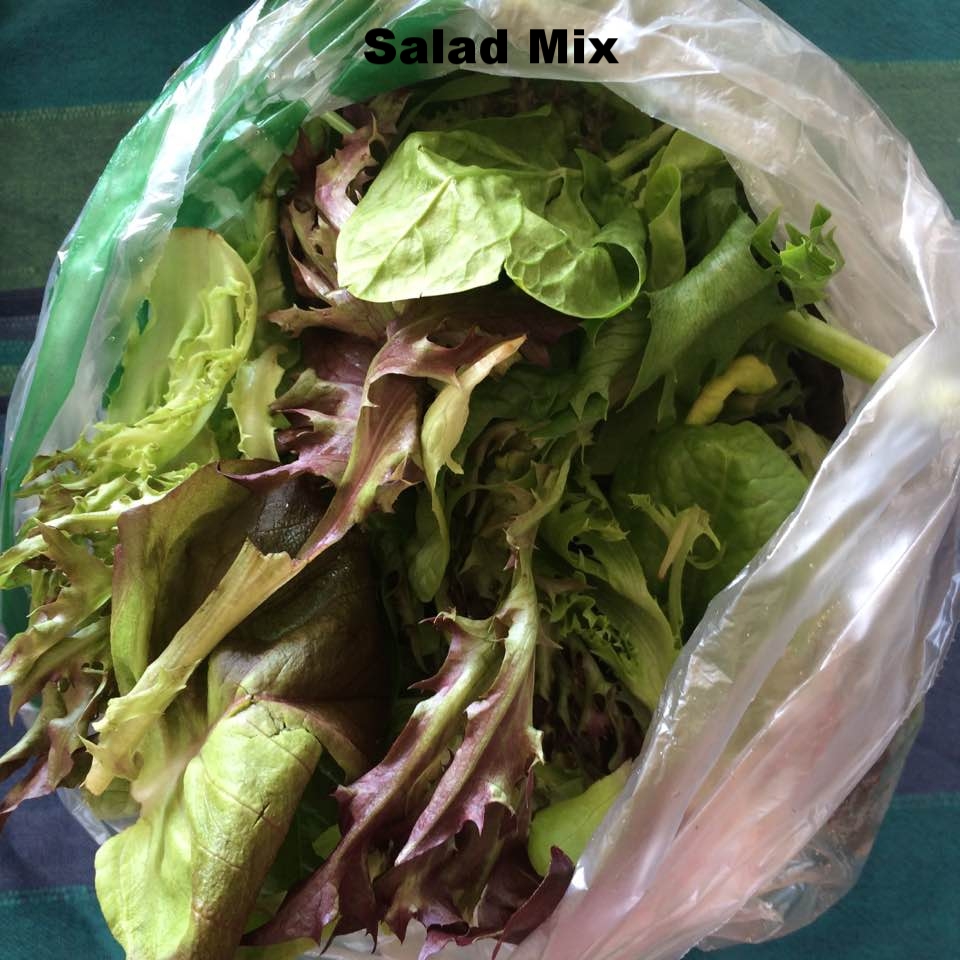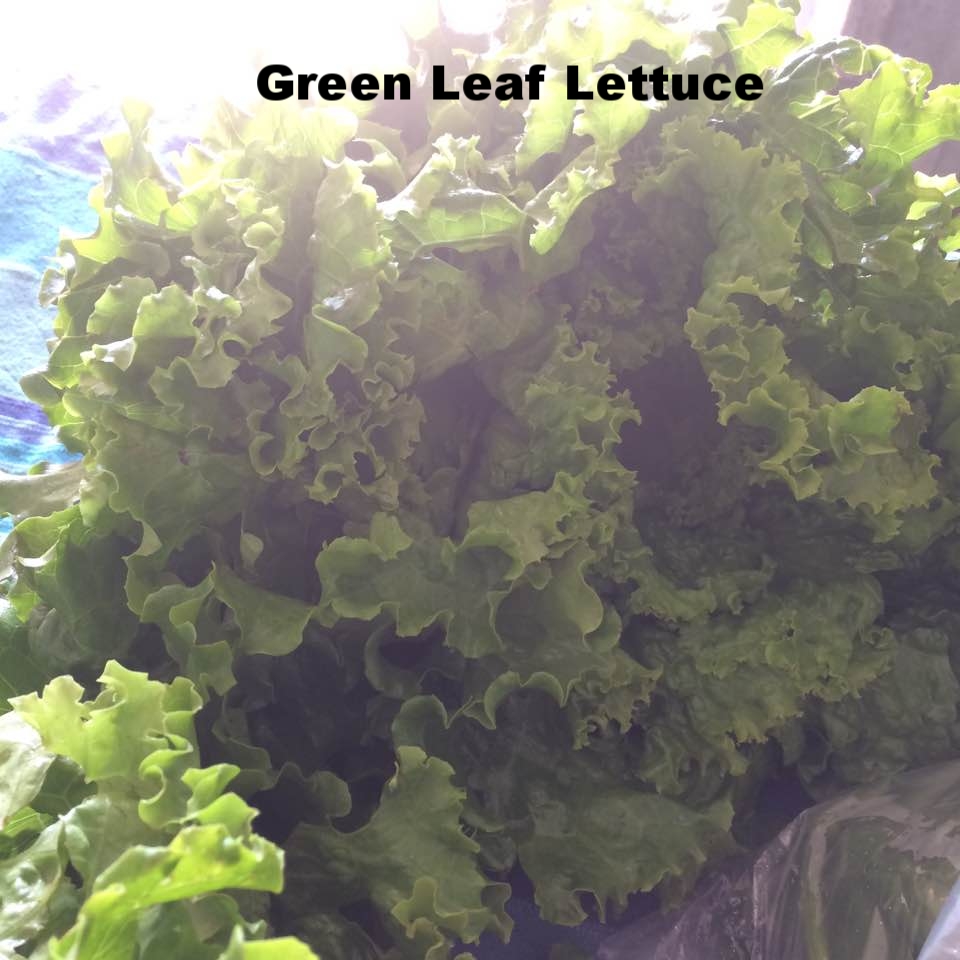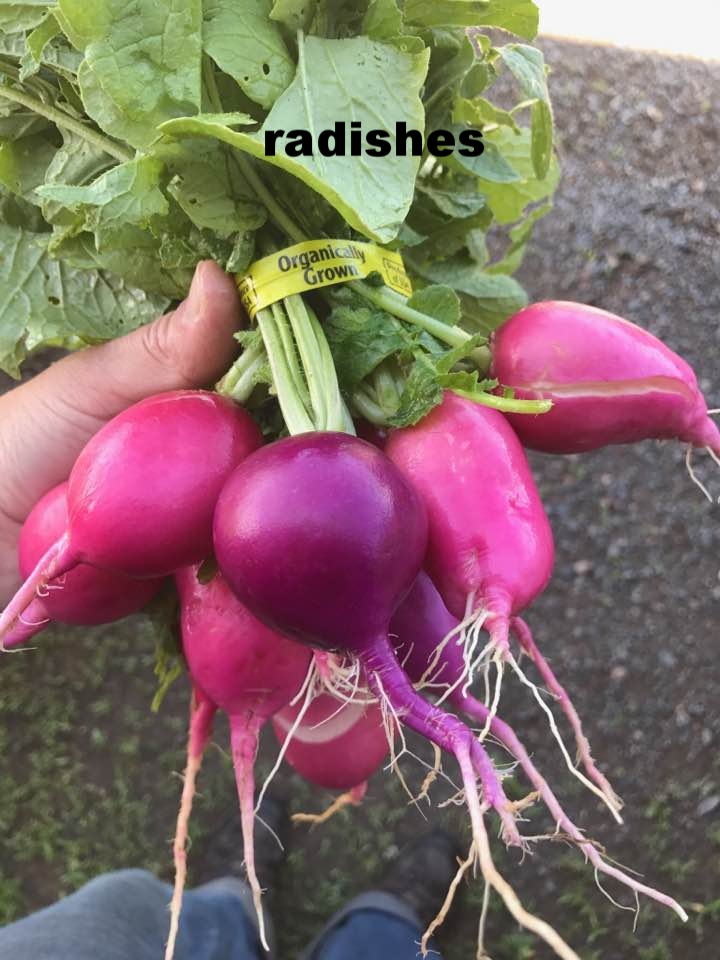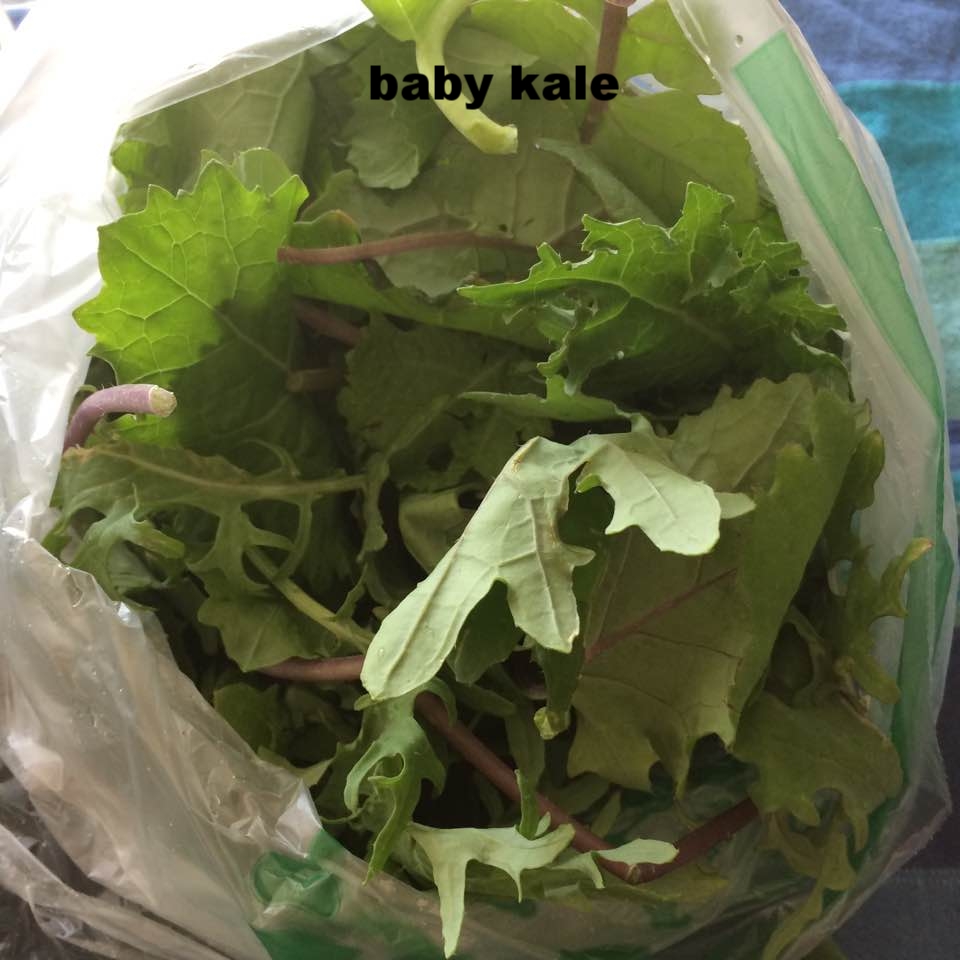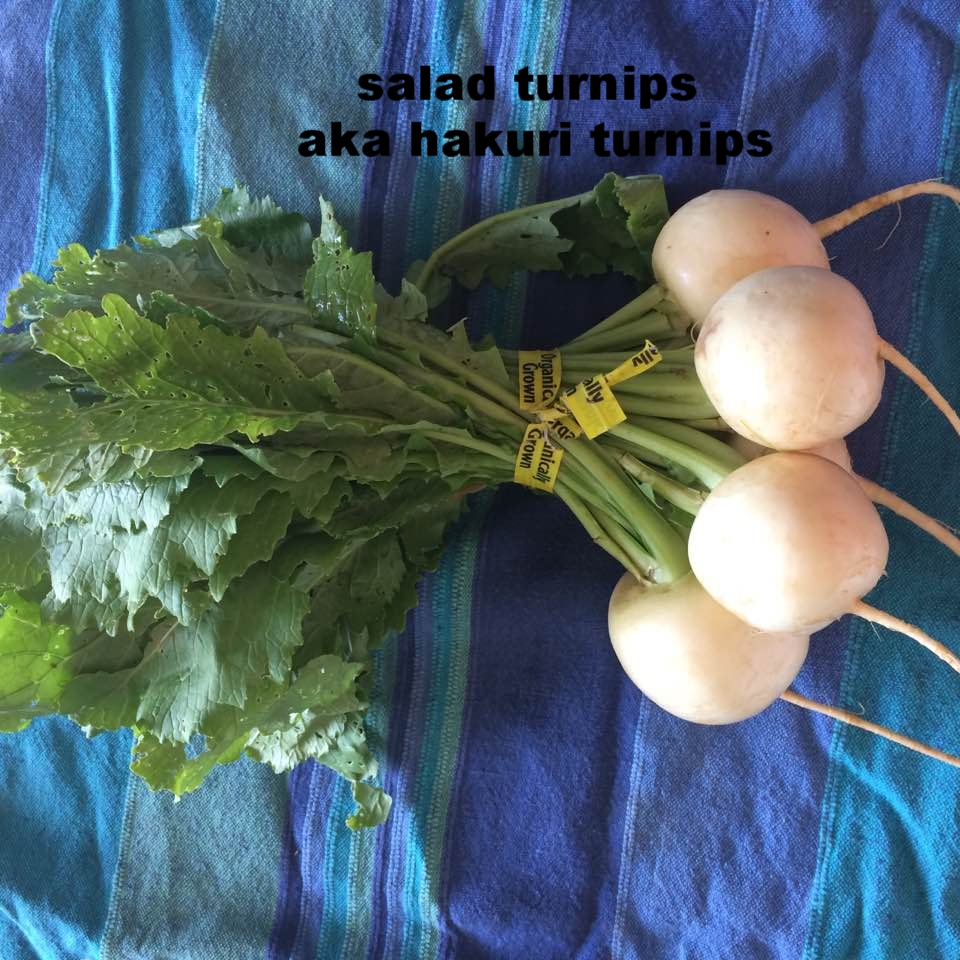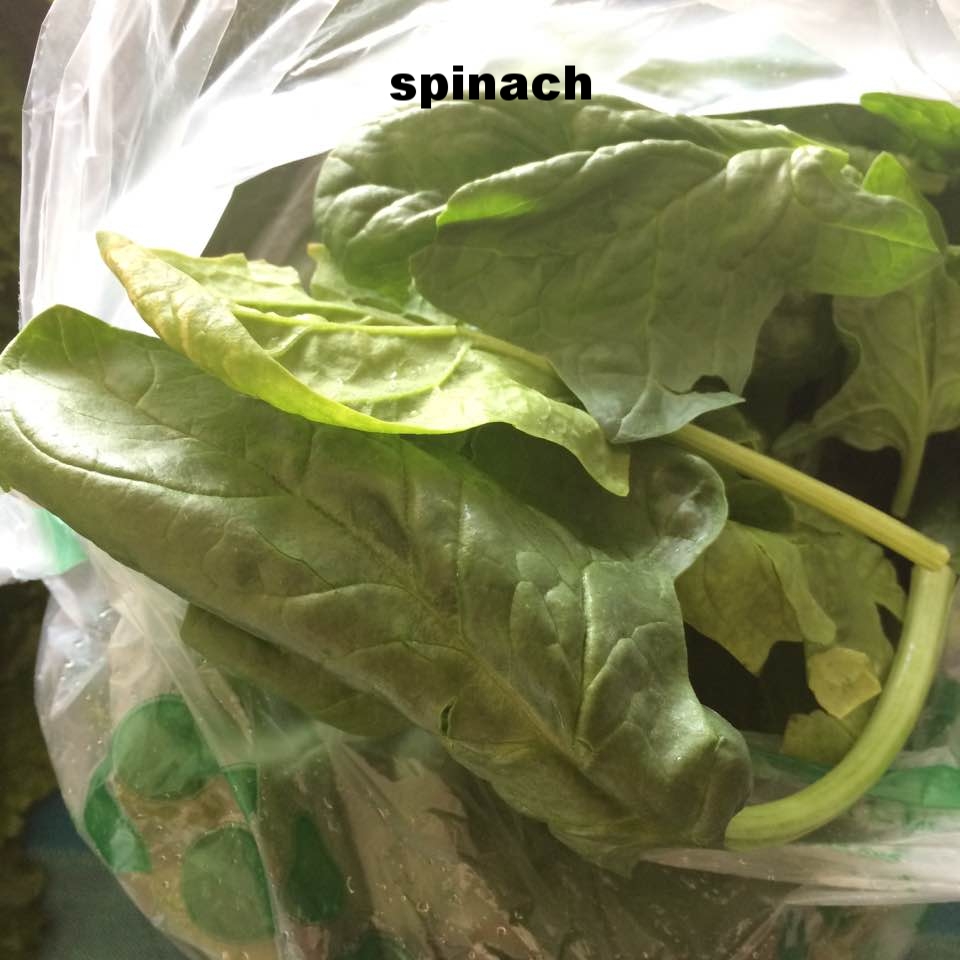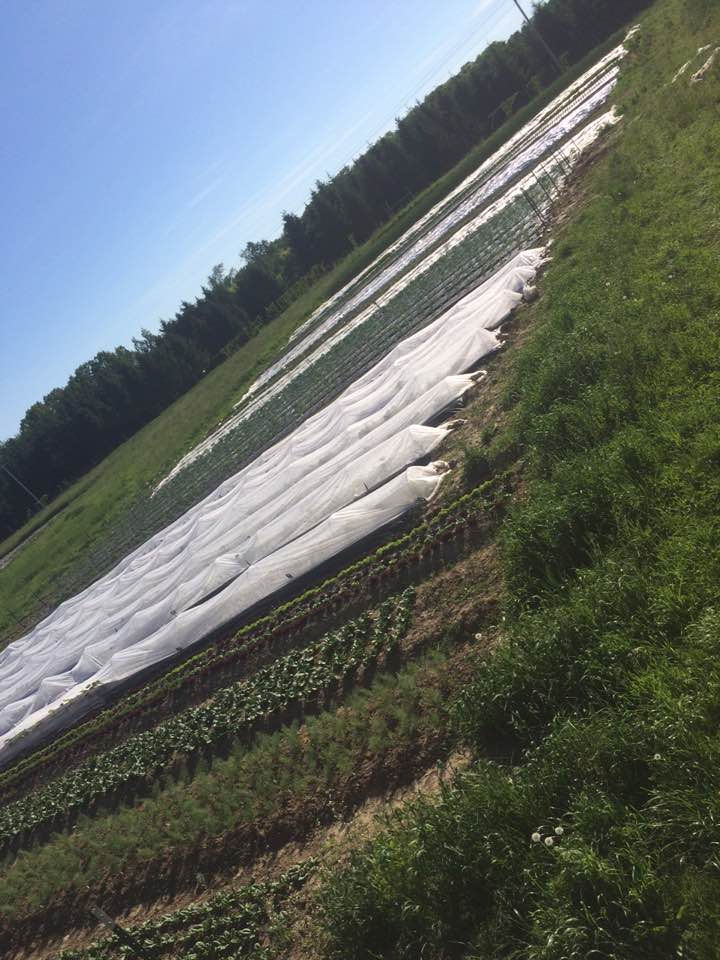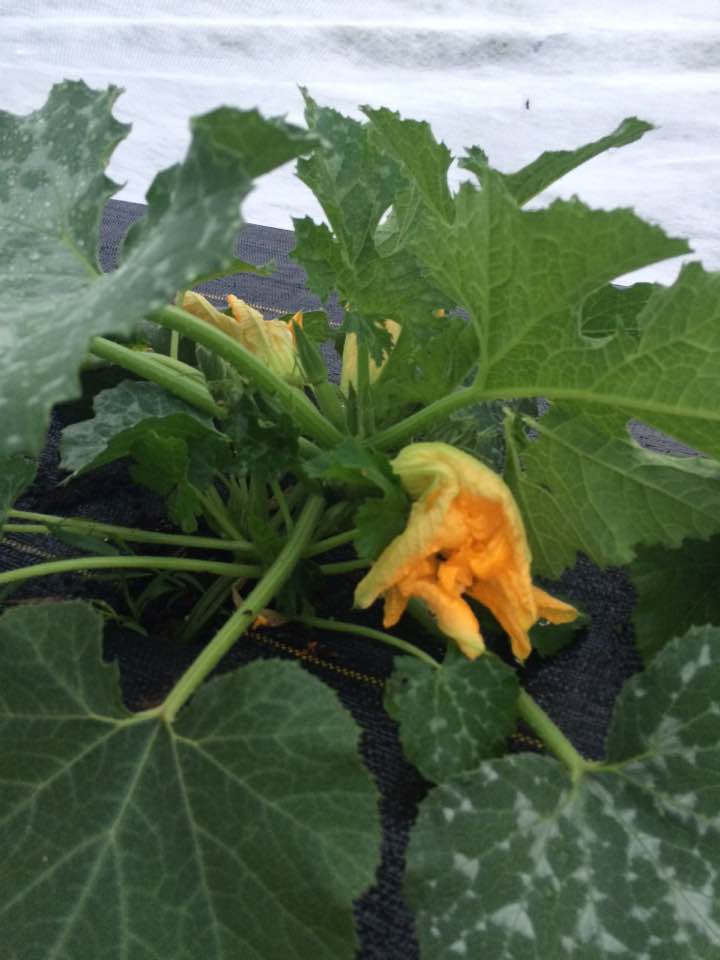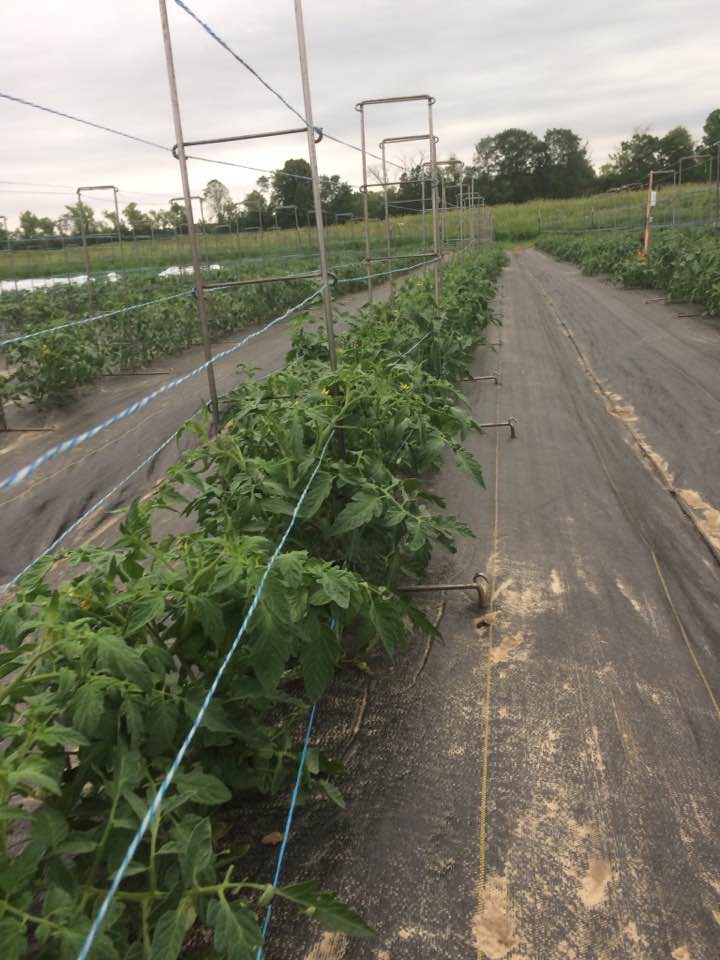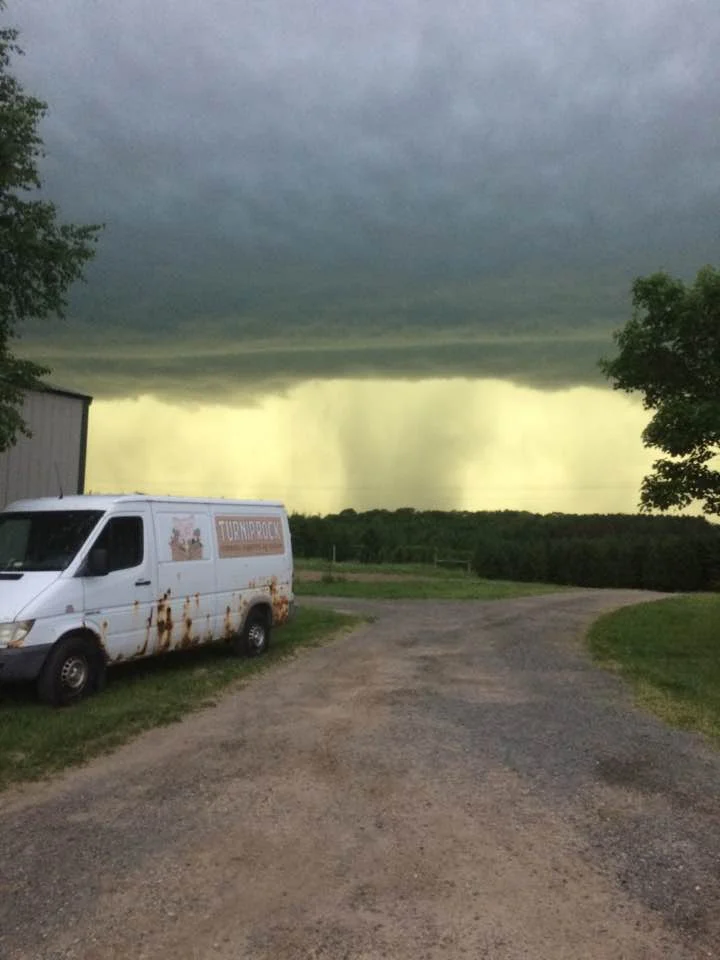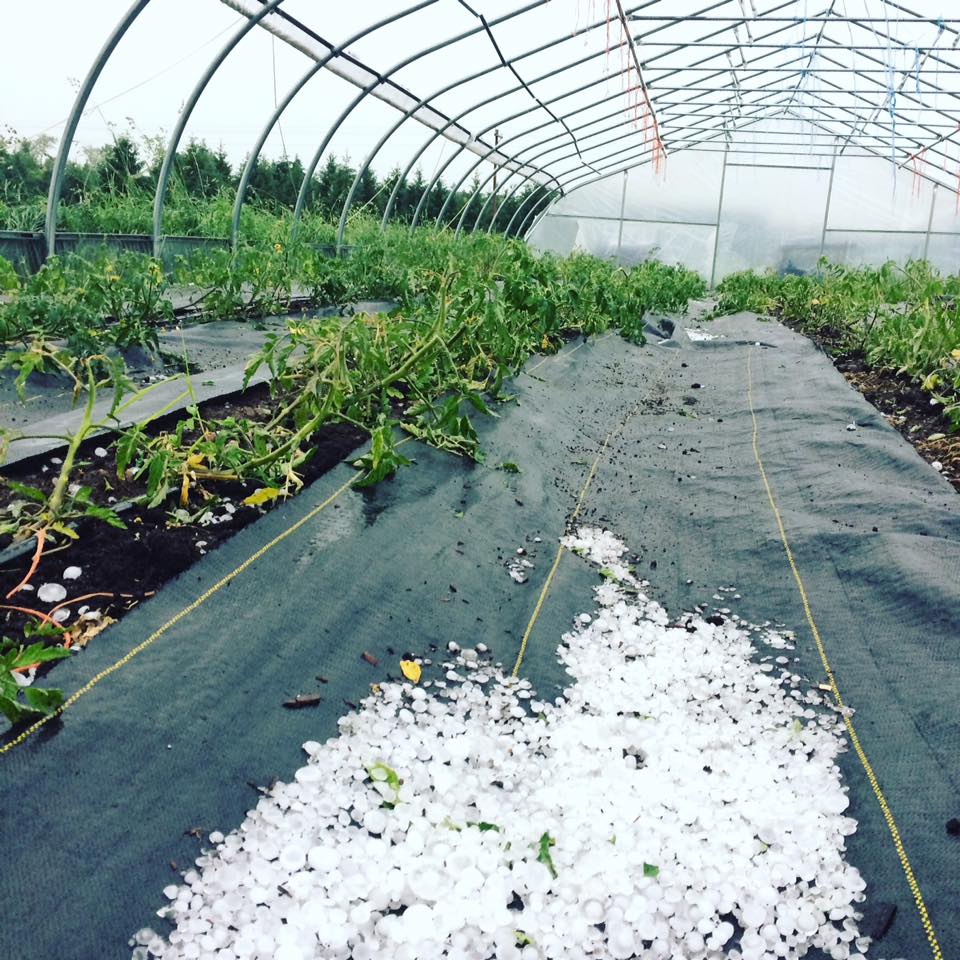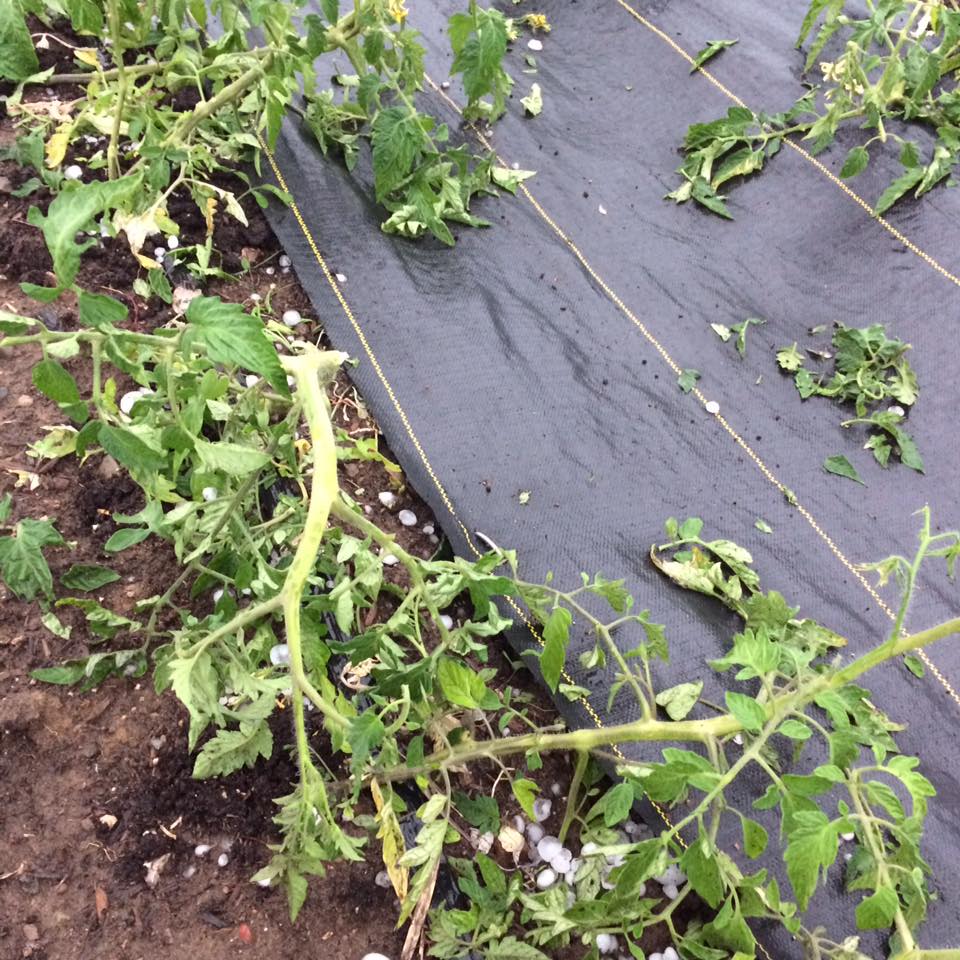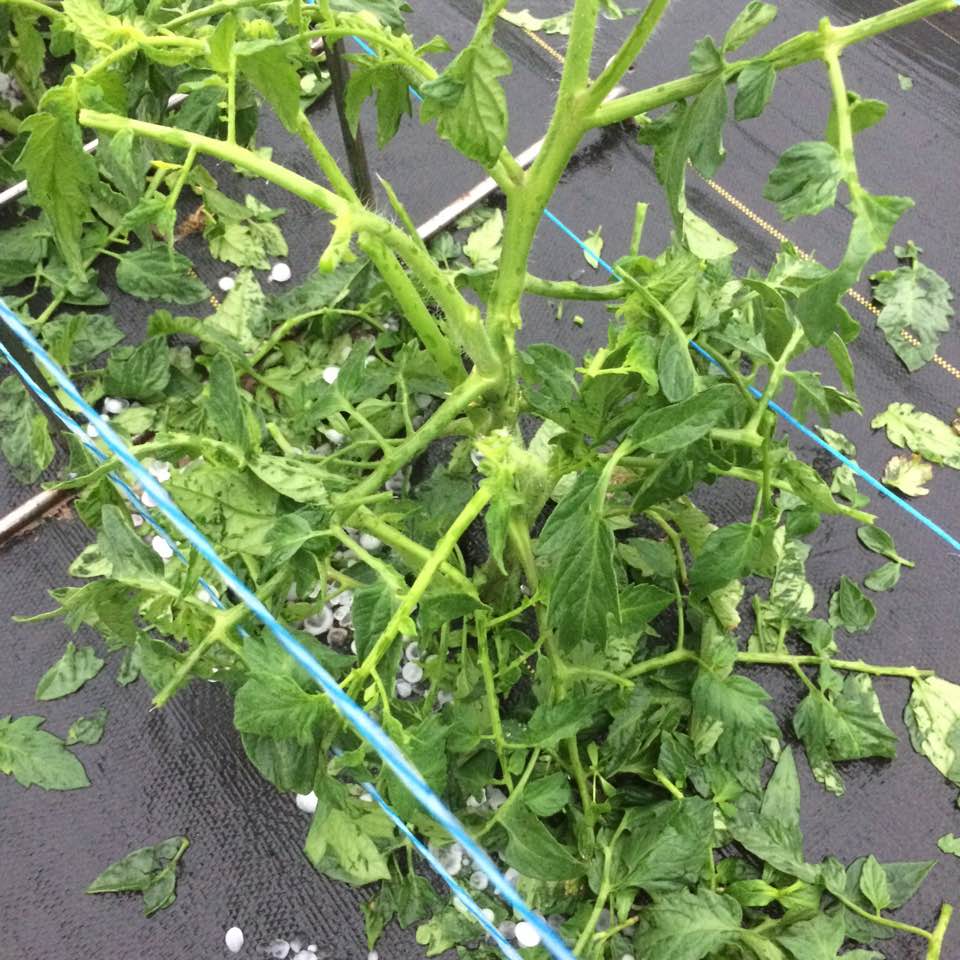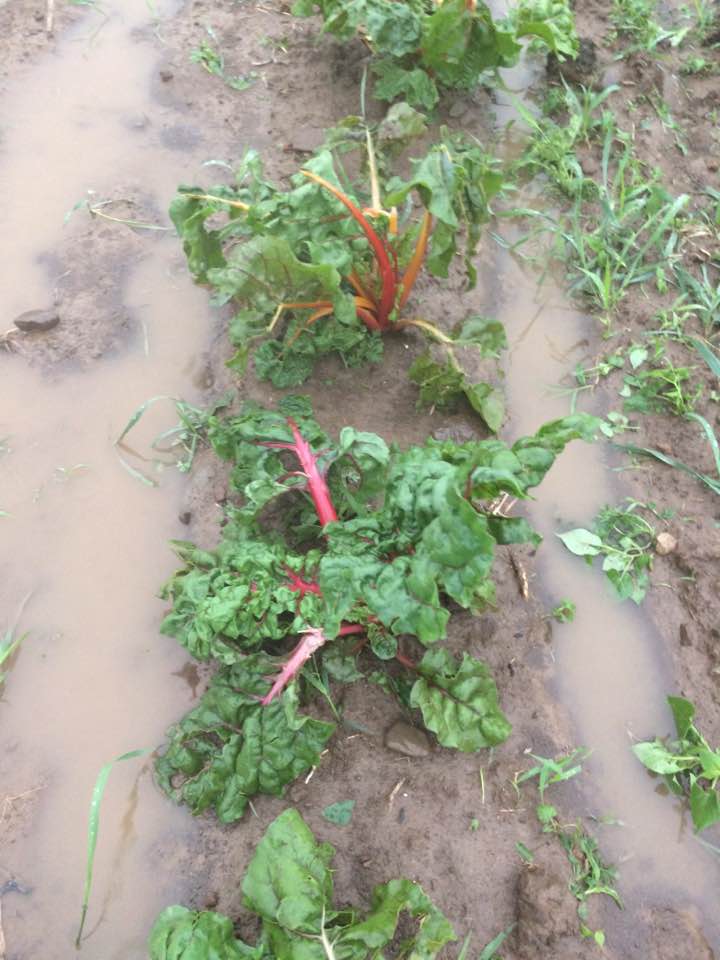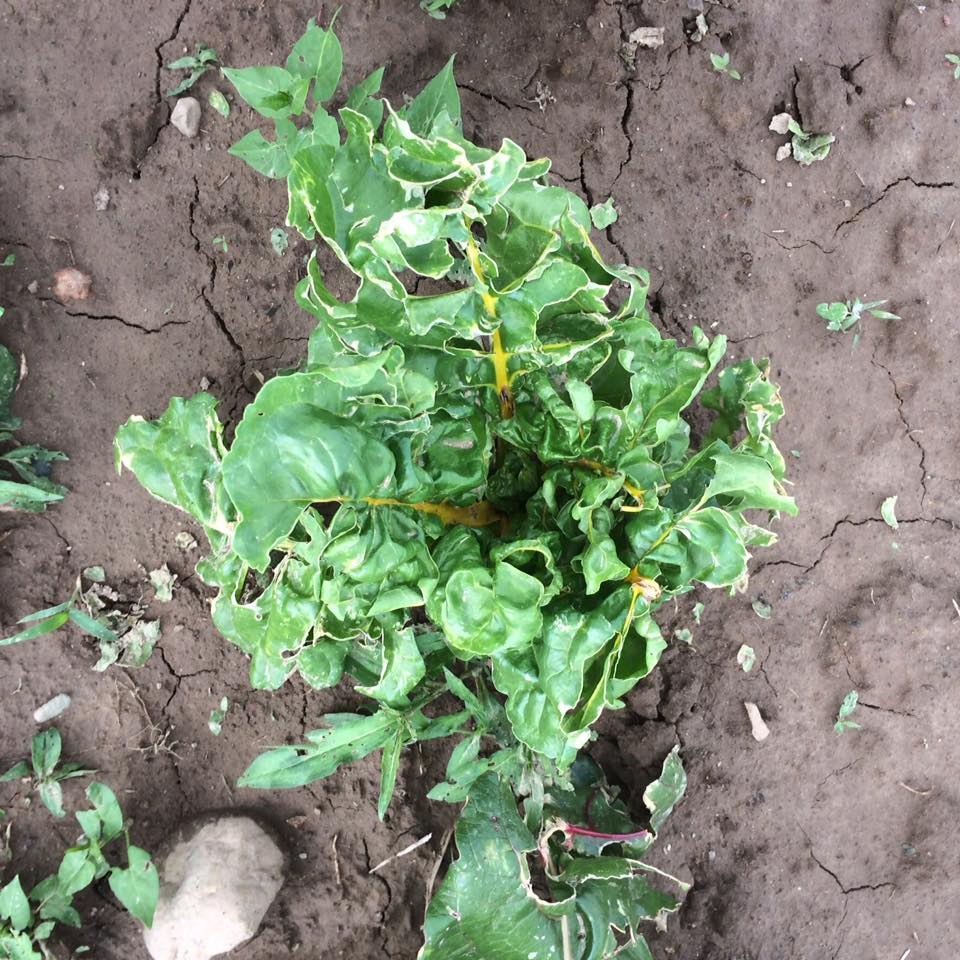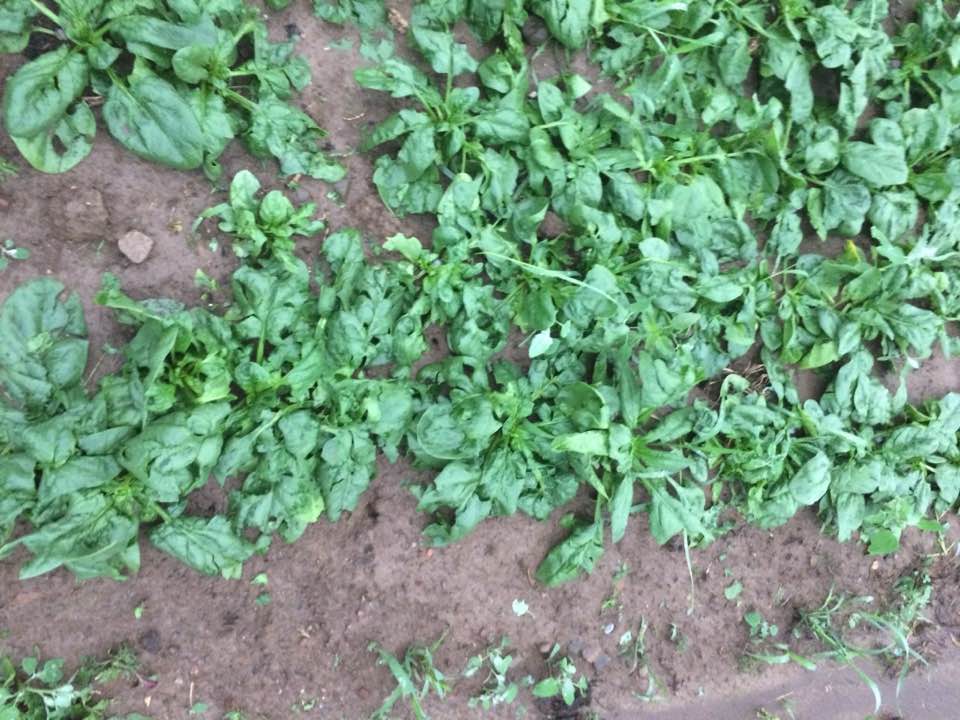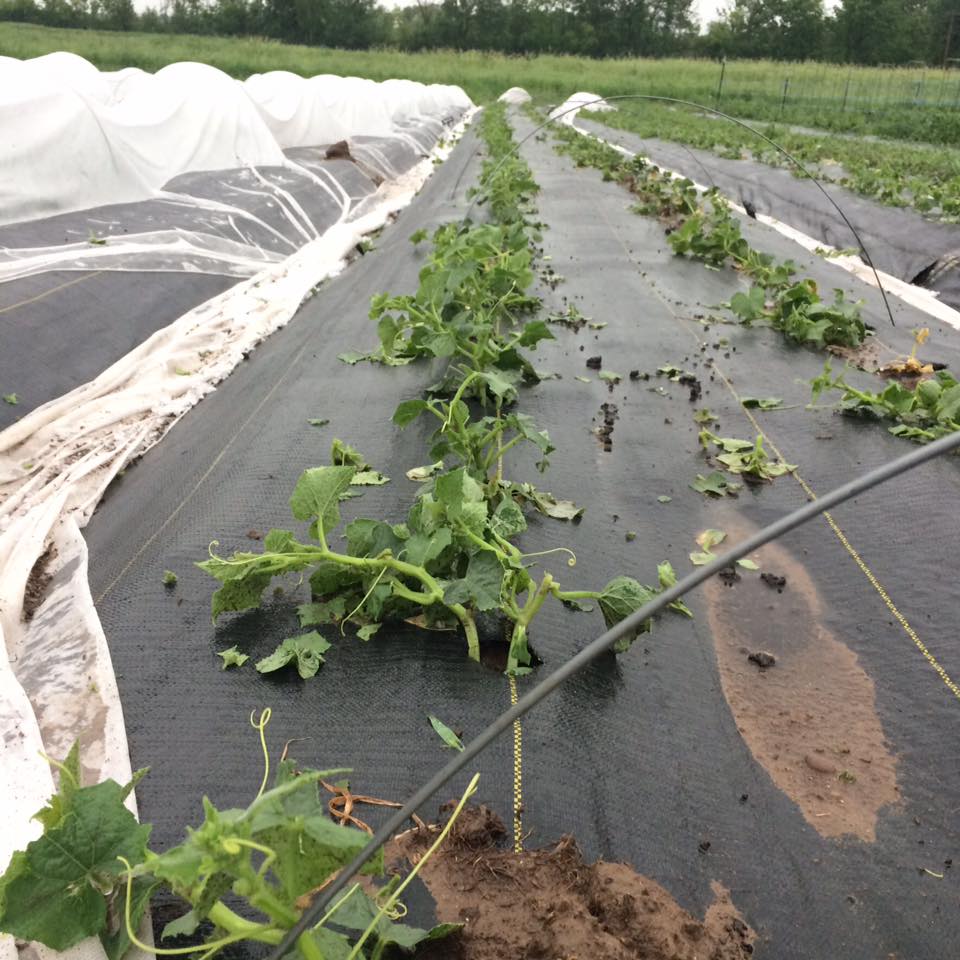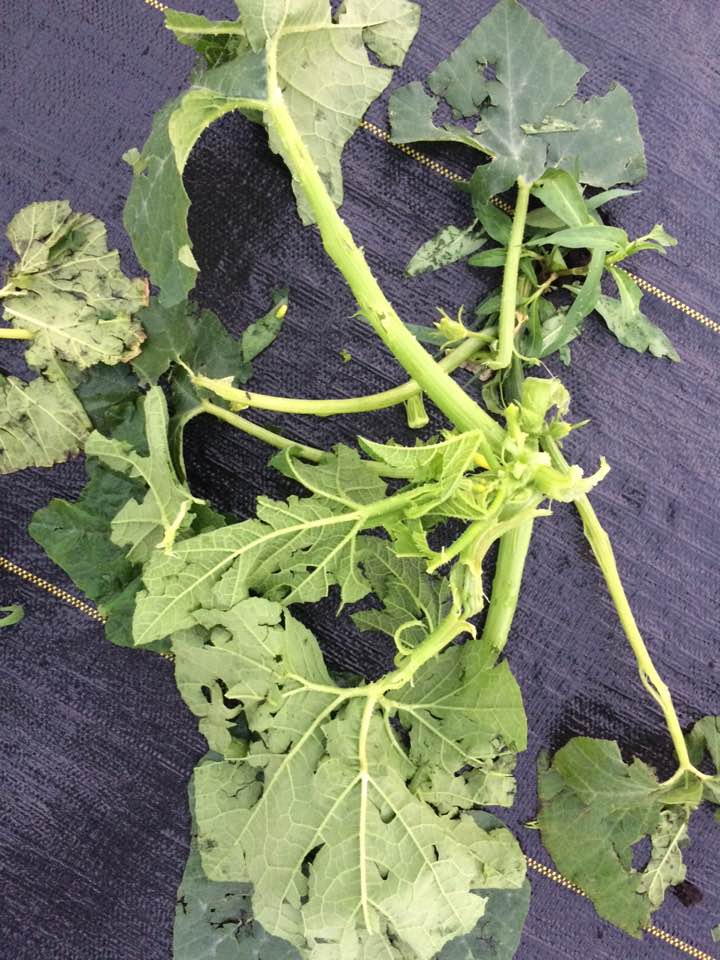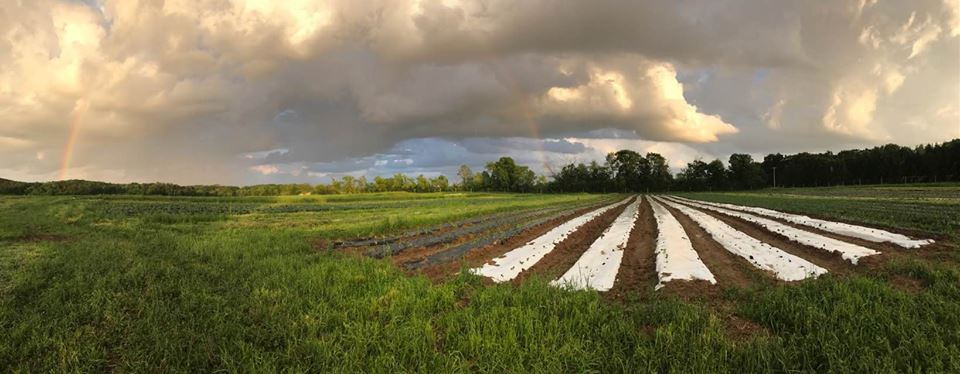Week 2; June 15, 2017
What's in the box?
Spinach
green onions
leaf lettuce
salad mix
salad turnips
radishes - ELF and small
herb pot - medium and large
baby kale - medium and large
Napa and cucumbers-large
Broccoli flourets- medium
Notes on the box.
We got hit badly by the last hail storm. Harvest was "picky" as we sorted out leaves that were damaged. Yields were lower and quality is not to the level we normally expect. We did our best given the circumstances. We were lucky that some things were under row cover and were protected. But your head lettuce has some holes... We had expected to put rainbow chard or kale in the boxes this week, but they were too damaged to include. We will trim off the worst damage and hope the new growth comes quickly and that the plants don't go into shock.
Broccoli "buttoned up" early after a month of sitting through cold weather and then the sudden shift to very warm temps. The shifts in temps really stresses these plants (and farmers!) out. We are sad to not have big full size heads for all members in the boxes. Though if they had been bigger, we might not have been able to give them because they may have been more damaged by hail... There is more info and pictures of the reality of these storms below. Not for the faint of heart.
For best storage, greens should be removed from Radishes and Turnips right away. Greens on Turnips and Radishes are edible and can be stored in a plastic bag in the fridge. They are best cooked and can be added to baby kale if you plan on cooking that. Chop them up and sautee to wilt with butter.
Cheese Shares.
While the incessant rain and hail is no good for annual veggies, the grass keeps growing and the cows are all just fine! They come into the barn when there's danger of a big storm, or if it comes suddenly, they seek shelter in the tree lines.
This week we have fresh cheese curds made for you yesterday! The quark flavored is with green garlic and dill and is a farmers market favorite. My favorite thing to do with the quark is to have it on a slice of baguette with sliced radishes. It's also good dolloped onto scrambled eggs or baked salmon at the very end of cooking. Or you can mix it into warm pasta (might want to add a little bit of the pasta cooking water) for an instant sauce and serve it on a bed of fresh spinach or lettuce. Of course, you can also have it with crackers. Cheese Curds are for snacking! You can mix them into salad, too.
Recipes.
Hakurei Turnips with Miso Butter by Deborah Madison
Ingredients
Japanese turnips
2 tbsp butter, at room temperature
2 tbsp mirin
3 tbsp white miso
1 tsp black sesame seeds (or white), toasted in a dry skillet until fragrant
3 green onions, white parts plus an inch of the greens, slivered
Sea salt
Instructions
Trim the turnips and peel neatly with a paring knife. Section them into quarters or sixths. Melt a tablespoon of butter in a skillet over medium heat, add the mirin, then the turnips, and cook, allowing them to color, for several minutes.
White the turnips are cooking, stir together the miso and the remaining butter. When the turnips are tender, add this mixture and allow it to bubble up, coat the turnips, and just heat through. Transfer to a serving dish, finish with the sesame seeds and green onions, and serve. This dish probably won’t need salt, taste to be sure.
*A few changes we made with this recipe... We didn't peel the turnips, and didn't think they needed it. I chopped off the greens while the turnips were still in a bunch leaving about a half inch of the greens' stems. Then I quartered the turnips and cooked as suggested above. Then, just before adding the Miso, I added the turnip greens, roughly chopped and let them wilt. I think it might also be good with Kale added before the Miso.
On the Farm.
What a week.... Saturday was hot and very windy. The wind ripped the plastic off of our hoop house on Saturday and on Sunday morning the sky turned green and we were hit with our second hail storm of the season. Followed by more excessive rain.
As hail poured down we sent and received texts from the other farms that we are lucky to have in our neighborhood. We saw lots of damage to farms nearby and also farms in Minnesota as well as farms further East of us.
For those of you not in the know about growing vegetables, hail is among the worst weather a vegetable grower could get. The first time around we were lucky and lost a few transplants. But this time around we had full blown heads of lettuce, greens ready for harvest, beautiful Summer squash and zucchini, tomatoes with flowers and big leaves, and newly planted winter squash and melons... Long season crops like squash and peppers are one time plantings that it is now too late to replant. We were feeling very unsure during the storm and immediately after if we would have veggies to go in the boxes.
How'd we and our neighboring farms fair? It's still unknown ultimately. the plants are alive, maybe 10-30% was a complete loss in most of our crops. But the unkown factor is that the damage makes them vulnerable to problems and set back in their development. Open wounds can get bacteria and mold, which leads to disease and pest infestations.. many of the most vulnerable crops it's just too late to replant, so we will give them foliar feedings, trim off damage, and hope for the best.
What do we do? The CSA model plays a big role in the survival of a storm like this. We don't qualify for crop insurance and if we did, some of the pay out for the crops are only as high as 50% of the wholesale price of the crop. In other words, 25 cents for a bunch of radishes and less than a dollar for lettuce heads. At our small scale it wouldn't be worth the premium of the insurance. The ag world is built for the big farms. You, our CSA members, are our support system. Our community is our insurance.
Here is the proof that diversity is resilient. It was bad, the worst we've seen in our tenure, but we were still able to pack a box. Most things look pretty okay, if lower yields. We had some foresight to harvest a few things ahead of the storm, but there wasn't a lot of time. The most affected crops were the head lettuce, full sized kales and swiss chard that we'd hoped to have in the box. Those things will bounce back.
BUT to be clear, we have sustained a serious financial and crop yield reduction. Like all diversified direct market farms we have diverse income streams. We wholesale some of our produce when we can after harvesting for CSA. We will lose thousands of dollars now due to the crop damage and we will spend thousands more in parts and labor to put it all back into place. There are no good words to describe the feeling. We are all thankful that all people and animals on the farms are okay. Buildings are still standing. We are so grateful that things were not still worse. We know that the twin cities got these storms as well and we hope that no one was hurt and that damage you endured was minimal.
Thanks for weathering the storm with us.
What's Growing On?
things are tentative right now. We hope for good weather and quick growth.

